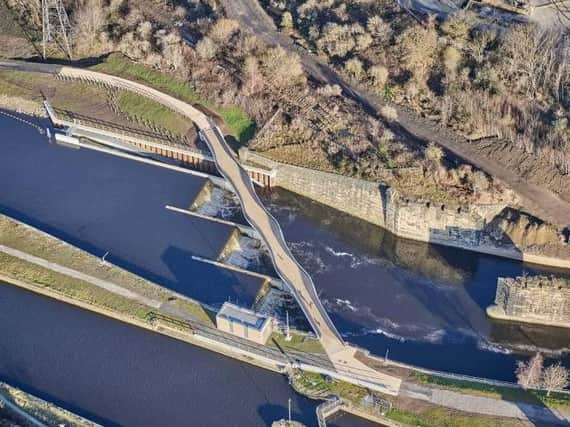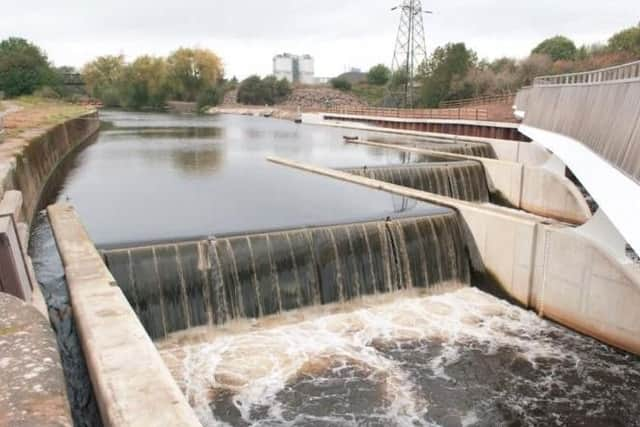Council reinforces need for further flood defences in Leeds after moveable weir at Knostrop used for first time last weekend


With heavy rainfall falling on already saturated land over the weekend of March 16-17, the trigger point was reached for the moveable weir at Knostrop to be lowered on Saturday, March 16 for the first time.
Advertisement
Hide AdAdvertisement
Hide AdThe weir was installed in 2017 as part of the £50 million first phase of the Leeds Flood Alleviation Scheme.


By lowering the weir, the council's on call Leeds Flood Alleviation Scheme incident team supported by the Environment Agency were able to control the flow of the River Aire in order to effectively protect city centre properties from the threat of flooding.
As the river continued to rise, the team considered also activating the second weir at Crown Point, where levels came within approximately 70mm of the trigger point, before the river level slowly stabilised as conditions improved.
Together with additional flood defence measures recently put in place to protect homes and businesses along the riverside at Stourton, the scheme proved successful in preventing properties in the city centre from flooding.
Advertisement
Hide AdAdvertisement
Hide AdHowever, some low lying riverside footpaths were flooded as these areas are not covered by the scheme which focuses on protection to properties and infrastructure.
Despite the success, leader of Leeds council, Councillor Judith Blake highlighted the need for further flood protection.
She said: “The recent extreme weather culminating in the weekend was very positive in one regard as the state-of-the-art technology in our moveable weirs was used successfully for the first time, proving what a fantastic investment it is for Leeds and the city centre so thanks to all the team at the council and the Environment Agency for their vigilance and effective use of the procedures.
“Unfortunately the contrast with large parts of our city which remain vulnerable with no such flood defences in place was clear, so that is why we remain firmly committed to continuing to do everything we can to deliver catchment-wide defences so that all communities in Leeds can be protected from the increasing threat of extreme weather and flood events as soon as possible.”
Advertisement
Hide AdAdvertisement
Hide AdThe Kirkstall Corridor, one of the worst-hit areas when the Christmas floods hit the city in 2015, again suffered with surface water and river flooding and some low lying areas around properties were impacted.
A range of measures to put formal defences in place in this area for the first time continue to develop as part of phase two of the £112 million Leeds Flood Alleviation Scheme, with the council proposing a two-step process to allow works to begin this summer followed by further elements to complete it once the full funding has been confirmed.
The River Wharfe was also subject to flooding over the weekend, affecting vulnerable communities from Otley to Wetherby.
Plans for formal defences in Otley also continue to be developed by the council and the Environment Agency, with a planning application to be brought forward in the coming months.